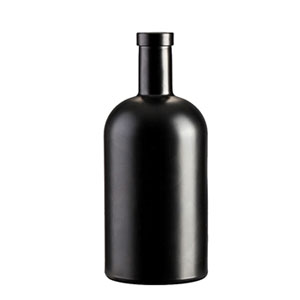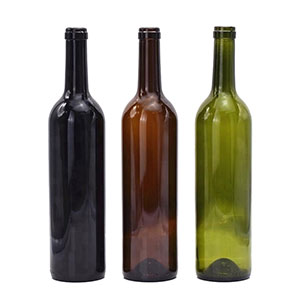- Glass Group
- 2021-12-9
- (0) comments
Development method of sealing gasket for glass wine bottle
From Glass Group,The types of glass wine bottle sealing gaskets vary with the contents of the wine bottle, but they are nothing more than single-layer homogeneous gaskets and multi-layer composite gaskets. The single-layer homogeneous liner is a single flat material such as cardboard, felt, etc., which is placed in the cap and the bottle cap is screwed tightly to seal the contents of the bottle. Items that do not require a high degree of sealing are usually sealed with such materials. The multi-layer composite liner is divided into a bottom layer and a surface layer. The bottom layer is lined with the bottom of the cover. It requires good compressibility and resilience to tightly press the surface layer on the bottle mouth so that the surface layer can be fully sealed. Function, the materials used are cardboard, cork paper, felt, foam plastic and so on. The surface layer is pasted and sealed on the bottle mouth, which requires excellent gas barrier properties to ensure that the contents of the bottle will not deteriorate after long-term storage. The materials used include plastic composite paper, various polymer materials, metal foils and coatings. For items that require a high degree of sealing and a long shelf life, this type of gasket can be used for sealing.

The composition of wine is very complex, many of which are strong volatile substances with low melting and boiling points. The leakage of volatile substances in the wine makes the wine lose its aroma and flavor, so that it is necessary to maintain its original flavor. Very difficult. The volatile substances in these wine bottles generally escape through the following two ways, namely, passing through the micro-gap between the sealing gasket (hereinafter referred to as the gasket) and the bottle mouth and emitting through the gasket. The leakage of wine gas is firstly when the surface layer of the liner is adsorbed and accumulated to a certain concentration, then it passes through the liner layer to the other surface of the liner and is emitted into the air. Therefore, the liner is required to be in close contact with the bottle and have a larger contact surface with the bottle mouth. More importantly, the liner should have high gas barrier properties. The author studied the two schemes of combining non-polar and high-density and high-crystallinity materials into a multi-layer composite liner, and then compounding the inner sealing layer and the edge of the bottle with a sealing glue to seal the wine bottle. We found that there are two The solutions are better than the inner plug (pad) and the rubber sleeve, and satisfactory results have been achieved for the sealing of the wine bottle factory.
In order to determine which of the above two schemes is better, the author made the following comparison:
(1) Multi-layer composite liner is additionally equipped with sealing glue on the edge of the outer cover. This scheme requires multilayer compounding and selection of suitable sealing glue. The compounding process is not difficult and saves time and effort;
(2) Multi-layer composite liner and inner sealing layer are required to automatically separate from the main body and stick to the bottle mouth during use, and the sealing efficiency is greatly improved.
It can reduce operation and packaging process, save time and effort, but it is difficult to compound. After comparison, we believe that it is the purpose of the author's research on this subject to ensure that the high sealing performance requirements are met and the economic benefits are as high as possible, so the latter option is chosen as the research direction.
 English
English Deutsch
Deutsch 简体中文
简体中文









